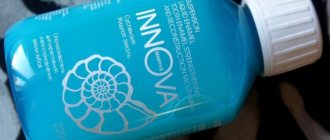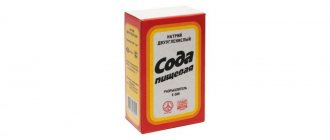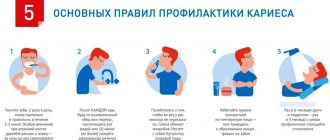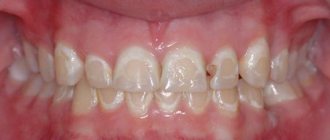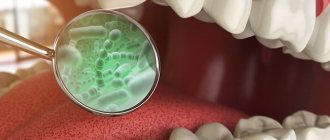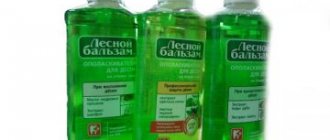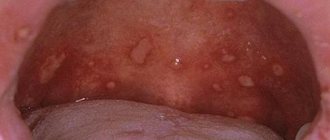How honey affects your oral health
Both tooth erosion and caries occur as a result of demineralization of the hard tissues of the tooth. But these conditions have different etiologies. Erosion is the result of a chemical process without the participation of bacteria, while the metabolic products of bacteria cause caries (tooth decay).
Previously, fluoride dentifrices and solutions, antibacterial mouth rinses, and antibiotics were primarily used to treat gingivitis and enamel demineralization. Recently, in Western practice, much attention has been paid to natural products that promote health.
Historically, honey has been used as an environmentally friendly medicine for many years in the treatment of burns, infected wounds, peptic ulcers, bacterial gastroenteritis and eye infections. In addition, honey has powerful broad-spectrum antibacterial activity.
Scientists have conducted numerous studies to determine whether honey causes erosion, and whether the composition of saliva changes under the influence of honey components, especially propolis, which is known to have a protective effect against dental erosion and the adhesion of early bacterial colonizers.
The effect of honey on pH
Significant differences in pH were observed in the honey and sucrose groups compared to the pH observed in the sorbitol group (p ≤ 0.001). The maximum drop in pH was observed after 5 minutes in both the honey and sucrose groups; however, the pH in the honey group recovered quickly within 10–20 minutes of exposure and did not fall below the critical decalcification pH of 5.5. On the other hand, pH after sucrose exposure fell <5.5 and was associated with a 30-minute recovery time. The pH observed for the sorbitol group did not change over time. Bacterial counts were significantly reduced in the honey group compared to the other treatment groups (p ⩽ 0.001), and honey significantly inhibited the growth of all strains tested compared with the inhibition observed with antibiotics (p ⩽ 0.001).
Results of studies on the antimicrobial properties of honey
In vitro studies have shown that exposure to a honey solution affects the activity of monocytes. Mouthwash containing propolis (present in bee products) has been found to have antimicrobial activity against Streptococcus mutans and can be used as an alternative treatment in preventing dental caries and reducing plaque accumulation and polysaccharide formation.
It was recently reported that periodontal pockets irrigated with a 10% propolis solution showed a 95% reduction in gingivitis. This suggests (based on both clinical and microbiological parameters) that subgingival irrigation with propolis extract as an adjunct to periodontal treatment is highly effective.
Topical application of propolis extract to oral Candida albicans infections resulted in remission within three weeks, and treatment efficacy was comparable to treatment with nystatin, the standard antifungal drug used to treat these infections.
Another study conducted on premolars for direct pulp capping also found that propolis was as effective as calcium hydroxide. Based on these observations, it was concluded that propolis could be used in conjunction with calcium hydroxide as an intracanal treatment.
A study conducted on bacterial isolates obtained from patients found that honey was a more effective antibacterial agent than some of the common antibiotics tested. This also suggests that honey may inhibit plaque formation and help fight gingivitis.
The benefits of honey
The composition of the bee product is rich in useful components. The vast majority of them are calcium. It is this component that is responsible for the strength of bones.
The phosphorus contained is suitable for whitening, and fluoride is the main protective agent against the destruction of hard dental tissues.
This product is also not deprived of useful vitamins:
- vitamin A. It is necessary for smooth tooth enamel and also helps eliminate bleeding gums.
- vitamin D. It helps absorb calcium and phosphorus.
- vitamin C. It is necessary for bone regeneration.
What foods stain teeth?
- Coffee
. Lovers of this drink most often have a yellow or brownish coating on their teeth. This is due to the cocoa butter, heavy carbohydrates and sugars contained in coffee. Instant coffee has a greater effect on dental health than ground coffee.
enamel. You can reduce the effect of coffee on your teeth by diluting it with milk or water. It is also best to limit your coffee intake to one cup per day. - Tea
. Contains tannins and, like coffee, stains teeth a yellowish-brown tint. Tea in bags is most harmful to teeth: due to the artificial components contained in it, which happens very often, it stains teeth more than leaf tea. The type of tea - green or black - does not matter. - Wine
. White wine contains acids that negatively affect tooth enamel, causing microcracks to appear through which coloring substances penetrate deeper. Red wine contains tannins and a burgundy-red tint, which also contributes to tooth staining. - Carbonated drinks
. Not only do they change the color of your teeth, but they can also leach calcium from your teeth. In addition to a huge amount of sugar, they contain malic, citric and other acids that literally “corrode” the enamel. You should especially beware of colored soda - it not only corrodes the enamel, but can also stain the tongue and teeth in poisonous colors. If you decide to drink Coca-Cola, do it through a straw, this will reduce the harmful effects on your teeth. - Juices
. Bright and dark juices, such as pomegranate, cranberry, grapefruit, etc., due to their bright color, can also cause yellowing of teeth. It is healthier to simply eat fruit or drink juice diluted with water. - Vegetables and fruits
. Berries that are rich and dark in color, such as blueberries, blackberries, blueberries, cherries, and cranberries, can cause staining and yellowing of teeth. Among vegetables, beets are a strong dye due to the high content of chromogens in them. To prevent dark plaque from forming on your teeth, it is recommended to brush your teeth immediately after eating beets. - Sauces and seasonings
. Many seasonings that have a yellow or brown tint are also on the list of foods that stain teeth. Due to their bright color and high acid content, tomato-based sauces are harmful to teeth. Also, do not overuse soy sauce. - Chocolate and ice cream
. Chocolate and caramel from their color also lead to darkening of the enamel. As for ice cream, sweet and fruit desserts, they contain artificial food colors and chemical components that lead to microtrauma and staining of teeth.
To avoid staining and maintain the natural color and health of your teeth, we recommend visiting a dentist once every 6 months for professional oral hygiene.
You can make an appointment by phone. 8(863)2098902.
How to protect your teeth?
To protect your mouth from dental diseases, you need to consume honey correctly. We bring to your attention a few rules:
- You should brush your teeth several times a day - morning and evening.
- After each meal, it is advisable to rinse your mouth with warm water.
- Throughout the day, you need to drink enough water so that saliva constantly washes the surface of the enamel.
- Your toothbrush needs to be changed every 3 months, otherwise bacteria will accumulate on the bristles.
Natural honey for healthy gums and oral cavity (health recipe with honey)
A huge percentage of adults around the world suffer from various gum diseases. Inflammation of the gums is caused primarily by the proliferation of bacteria in the oral cavity. If the mouth is not cleaned in time, problems arise, including with the gums. For this reason, oral hygiene is especially important. In this article we will talk about how natural honey helps in promoting gum and oral health.
Of course, there are many factors that contribute to the occurrence of dental diseases. These include genetics, hormonal changes, poor nutrition, decreased immunity, bad habits, as well as the use of certain medications.
Mild gum disease includes gingivitis. This disease is characterized by increased sensitivity of the gums, swelling and bleeding. Bad breath gets worse. If you have gingivitis, you need extra careful daily oral care.
If you have a more advanced stage of gum disease, your gums are not close enough to the necks of your teeth, they hurt and bleed - then most likely it is periodontal disease. This form of gum disease requires special professional treatment and may even require surgery.
But is there anything else you can do to combat or reverse gum disease? Yes, there are several things you can do to achieve a healthy mouth.
Here are some simple tips to help you avoid or reduce the risk of gum disease: 1. Avoid bad habits, especially tobacco use 2. Drink plenty of water to keep your mouth hydrated 3. Visit your dentist regularly 4. Make the most of it products for oral hygiene. Be sure to brush your tongue with a toothbrush twice a day.
Honey for oral health
There is also a very simple, but extremely effective remedy for maintaining the health of your teeth and gums. This is honey. Thanks to its antiseptic properties, honey effectively cleanses and fights bacteria in the oral cavity. However, it is important to use only high-quality natural bee honey to prevent any diseases. Counterfeit sugar will only worsen problems with teeth and gums (you can buy natural honey in our store).
When it comes to natural honey, dentists claim truly miraculous results from using honey in the fight against bacteria and oral infections. Honey not only disinfects inflammation and destroys germs, it also saturates the body with many useful enzymes. Chestnut honey has the most pronounced bactericidal properties. But honey of other varieties will undoubtedly be effective.
How to use honey to prevent dental diseases? Very simple. Every time, morning and evening, after you brush your teeth and mouth with a toothbrush and toothpaste, take a drop of honey on your fingertip and slowly massage your gums for 3 minutes. This operation can be done using a soft toothbrush. Leave a small jar of honey in the bathroom and do this procedure regularly. The results will pleasantly surprise you very soon. In just 2-3 weeks you will feel your gums getting stronger.
Another excellent preventive remedy is a solution with honey for rinsing your mouth. Dilute half a teaspoon of honey in a glass of cool water and regularly rinse your mouth with this solution.
Using these simple recipes for healthy teeth, you can visit the dentist's office much less often. Be healthy and smile more often!
« back to list of articles
User comments
Add a comment
Entrance
Introduce yourself
Login via social media profile
An authorization confirmation window will open, after which you will be automatically returned to the site.
Similar articles
Cleansing diet with honey. Goodbye toxins and waste (recipe for beauty and health with honey)
A recipe for cleansing the body using a honey diet.
This simple method will be useful especially after the holidays, during a period when the body is filled with various toxic and harmful substances. Natural honey will allow you to quickly, painlessly and tastefully rehabilitate your body after the New Year and Christmas. Use recipes from “Mountain of Honey” – and stay healthy! ...read more What is apitherapy?
Introduction What is apitherapy?
What treatment methods exist and what is treated with api products? What is bee venom (apitoxin) used for? Contraindications to apitherapy. Each of us has our own associations with the word “bee”. Some people’s imagination will instantly draw a vase filled with fragrant honey, others will imagine painful bites of small beasts. And only a few will remember the treatment of various ailments. ...read in full About the beneficial properties of ginger with honey (recipe for beauty and health with honey)
Intensively charging the immune system or preparing for the cold.
Infographics on the theme of ginger and a recipe for a healthy cocktail from Mountain of Honey. Autumn is the time of sniffling noses, unexpected colds and untimely illnesses. And there is still a long Russian winter ahead... Here it is worth seriously thinking about strengthening the immune system, and a plant such as ginger with honey can be an excellent assistant for the implementation of this difficult task. ...read in full Natural honey to help with a hangover (a means of cleansing and strengthening the body after alcohol)
Several effective recipes with honey for a hangover.
They will help restore the body, recharge with energy, strengthen the immune system and get into working condition. Which is especially important during the holidays. ...read more Honey for weight loss
Honey for weight loss? Losing weight and sweets - it would seem that these things are absolutely incompatible. But there is one sweetness that not only does not harm the process of losing weight, but also promotes it - this is natural honey. …Read completely
Rules for using honey for teeth
The benefits of honey for dental treatment have been proven by scientific medicine. To get the maximum benefit from the product, you must follow a number of simple rules:
- Do not allow honey to become too hot;
- It is not recommended to keep the honey product in direct sunlight.
- For storage it is best to use a dry and dark place. The ideal storage temperature is 5 to 10 degrees above zero.
- The dishes should be either wooden or glass.
- You should also avoid contact with metal.
What should parents know before dental treatment for children under medicated sleep conditions?
Parents need to know a lot about it, even if they are not dentists and do not want to “get into” the terminology and treatment methods. When it comes to issues of a child’s health, no matter who the parents are, they will have to go through a certain kind of “educational education” so that the decision about treatment is made consciously. Therefore, usually a consultation on treatment under medicated sleep lasts at least 45 minutes, and sometimes more. And here's what's being discussed:
- What is medicated sleep?
Dental treatment for a child under medicinal sleep conditions is one of the methods used in children of any age (when they already have teeth) according to indications. During treatment, the child is in a state of deep sleep, consciousness is turned off, there is no understanding of what is happening and no memories of it. The term “medicated sleep” is similar to the term “deep sedation.”
- Medicines, why is it safe?
At the moment, the drugs of choice for this condition are Sevoflurane (Sevoran) and Diprivan (Propofol, Pofol). Sevoran is a gas supplied using a high-precision device through a mask or tube into the lungs. Propofol is a white liquid that is administered intravenously using a special syringe.
Most often, a combination of these drugs is used, but the decision on the choice of drug or their combination remains under the jurisdiction of the anesthesiologist-resuscitator. These drugs are the most “clean” in modern reality and do not have the side effects that were characteristic of similar drugs of the last century. After treatment with Sevoran and Diprivan, there is no nausea and vomiting, no dizziness and disorientation in space, no neurological “kickbacks”. Therefore, treatment with medicated sleep is used in children with diagnoses such as cerebral palsy, mental retardation, autism, Down syndrome and others. Such children are most often in constant cycles of rehabilitation and, after undergoing treatment with Sevoran and Diprivan, do not lose the achieved results.
- Indications and contraindications
In dentistry, indications for treating children in medicated sleep are:
– multiple dental caries under the age of 3 years
— malformations of the central nervous system (Down syndrome, mental retardation, cerebral palsy, etc.)
- a large volume of intervention that must be carried out at one time for the child’s psychological comfort
- insurmountable fear of dental treatment (dentophobia), inability to adapt
- purulent-inflammatory diseases, abscesses, if it is impossible to carry out sufficient local anesthesia
- allergy to local anesthetics
Contraindications:
- decompensation of the underlying general disease
- acute and exacerbation of chronic diseases of the upper respiratory tract
Treatment in medicated sleep (hereinafter referred to as MS) may be denied if the preparation regime is violated, in the form of eating after a set time.
So, the parents realized that their child had indications for such treatment, and learned the basics - what MS is and how it is carried out. Next, I think it’s logical to talk about how all this happens, describing everything in detail. So that while listening or reading, you can imagine and “primarily experience” the whole process.
- Logistics from registration to departure home and beyond
After understanding the need for dental treatment for a child with MS, parents usually have a question of choice - “where to treat”, “how does this happen”? This is also accompanied by a hundred more questions like “how will he fall asleep?”, “how will he wake up?”, “will he be in pain?” and so on. Therefore, we provide the following information, which provides answers to most questions.
When the day of treatment arrives and the baby and his parents arrive at the clinic, everything begins like this.
The administrator copies the tests brought and takes a certificate from the pediatrician. Doctors come, greet and sign consent for their interventions: an anesthesiologist-resuscitator and a pediatric dentist. The previously drawn up treatment plan is discussed again. At this moment, parents can still express their wishes, for example, ask to still do the sealing, which was initially refused, or, conversely, write a refusal to treat a specific tooth. After a short time (~15 minutes), mother (or father) and child are invited to an office, on the walls of which there are pictures of animals sleeping peacefully on clouds.
There are 4 people in the office who will carry out the treatment. These are anesthesiologist-resuscitator, nurse anesthetist, pediatric dentist and dental assistant. When the baby falls asleep, there is also a full-time psychologist in the office. The baby is asked to lie down on an unfolded dental chair covered with a blanket and a disposable sheet, and the mother sits next to her on a chair, hugging the child. The anesthesiologist talks to the mother and baby, explaining what will happen now. A mask containing sevoran is applied to the child’s face. At this moment, the mother hugs, strokes the baby, tells him what exactly to do or simply encourages him. After 10-15 seconds of deep breaths of sevoran, initial sleep occurs, the baby closes his eyes and at this moment does not know where he is. After this, the coordinated work of the medical staff begins, mom or dad is escorted by a psychologist to the prepared waiting room, and the doctors begin their work.
The dentist takes all necessary diagnostic images and an initial photo protocol. He adjusts the preliminary treatment plan, depending on the expected diagnoses for specific teeth, and goes to the parents, telling them what will change in the plan and why.
This baby's sleep time is not wasted. While the doctor is talking, an experienced assistant is already carrying out professional hygiene of all teeth, without which high-quality treatment is impossible. When the doctor returns to the office, he immediately begins to work with the child’s already clean teeth.
During treatment, parents may experience anxiety about the child’s condition, however, by contacting the administrators, they can receive feedback in the form: “everything is fine, treatment is underway” or “the right side has been cured,” “crowns are being tried on,” etc.
After treatment, having completed his work, the doctor takes control photographs and a photo protocol is sent to the parents with a report on the treatment performed. In the 5-10 minutes that they have to discuss the results, the anesthesiologists finish their part of the work and bring the still sleeping baby to the waking room to the parents. Next, the dentist and anesthesiologist come to the parents in turn with recommendations and a description of further actions. Each of them tells how to behave at home, what the child feels in his mouth, what support he needs, what cannot be done, and what is absolutely necessary. Within half an hour, the baby wakes up, is given ice cream (if possible and age allows) and for another 15-20 minutes he finally comes to his senses, after which he can go home.
It is important to note that the work is carried out in a coordinated manner, and care for the child is deeply embedded in the standards of treatment created by the chief physician of the clinic. The child will wake up pained, and you will be told how to maintain this condition! You shouldn’t have the fear that “he’s in pain”!
Then you can’t forget about dentists for a couple of years. After treatment, we meet with the child on average 3 months later (the date is set by the doctor) for the purpose of examining and... correctly, ADAPTING him to the dental office. Now our goal is to carefully, systematically, raising the bar each time, to create conditions in which a person will grow up without dental phobia and will perceive preventive and therapeutic visits to the dentist as one of the aspects of self-care.
- Openness and reporting
All stages of the work are photographed, and after treatment, parents receive a photo report in one form or another. Usually we make collages on which we mark the key points of treatment - how many teeth were cured, where there was pulpitis, where there was pus, where there were difficulties in saving the tooth due to severe decay, or another 10 minutes wasted due to inflammation and bleeding of the gums. Thus, it becomes clear to parents what is now in the child’s mouth, what should not be allowed, and what results we expect from this or that tooth.
So, the virtual treatment took place, the thought in my head was “everything suits me, what should I do now to make the treatment take place”?
- Analyzes and preparation
It is necessary to select a date and time of treatment with the administrator and collect tests by this date. Here is their list:
— clinical blood test (acceptable from a finger, in case of difficulties with blood sampling)
- general urine analysis
— ECG or echocardiogram (ultrasound of the heart) for children, or if the child is restless
- certificate from a pediatrician
Additionally, you need a certificate from a specialist who registers the child if there is an underlying disease. For example, a neurologist for cerebral palsy or a cardiologist for heart disease.
It is logical to take tests first, and get a certificate from the pediatrician last, so that he has the opportunity to assess the child’s condition based on tests, among other things.
Important! On the day of treatment, it is necessary to observe a fasting break and not allow the child to eat or drink for 2 to 4 hours. This is described in detail in our instructions that you receive after the consultation.
- What to do if the tests are ready and the child is sick?
This happens, and the key to success in order to get out of this situation calmly is communication. Yes, don't be surprised. If a child, a couple of days before treatment or right in the morning on the day of treatment, suddenly starts sneezing, or has a fever, or has a runny nose... you can’t wait and think. The first thing that should happen is a call to the anesthesiologist
! You found out who your doctor is at the time you select the date and time, and the phone number is printed on the memo. The anesthesiologist will guide you, assess how much the condition is interfering with treatment, make recommendations, and you will know what to do next. How and when treatment will take place in this case. Without unnecessary assumptions, you will receive guidance for action.
What else do parents need to know?
Dear parents, I am deeply convinced that most disputes, conflicts and misunderstandings are born from closedness, stereotypes and lack of communication. I repeat to everyone during consultations many times - we are here for you, we are in touch. Please, if you have any questions, ask us. You have entrusted or are still choosing whether to entrust us with the treatment of your child, and there should be no room for doubts and “look on the Internet”, all questions can be discussed openly.
- Trust and feedback
You can always contact your dentist or anesthesiologist directly, and we will answer you. You receive a photo report of the work done with the stages of treatment and comments. You receive recommendations and guidelines for action. You receive our willingness to follow the path of adaptation with the child, find a common language with him and move on.
At the end of the article, I would like to note that, as a rule, it is still very important for parents to know what materials, devices and methods will be used for treatment. This is the topic of a whole separate article, but this information is also discussed during the pre-treatment consultation.
The key to successful dental treatment for a child during medicated sleep, in my opinion, is open communication and parents’ trust in the team of doctors. The doctors at the Belaya Medveditsa clinic work for the health of your children and are open to discuss all issues.
For toothache
If a person has a severe toothache, then you can take honey and cinnamon in equal proportions, grind the mixture and apply it to the sore spot.
For fungal infections of the oral cavity, it is necessary to prepare a special “honey solution”; to prepare it, you need to take 100 grams of honey and 50 ml of water and put it on fire, and you must not forget to collect the foam. You should also add 50 grams of rose petals there. They should first be soaked in sugar water, boiled for another hour over low heat, removed and strained. This remedy helps with stomatitis, just store it in the refrigerator. In addition, this solution will also help with sore throat.
Medicinal chamomile has an antiseptic, antispasmodic, and anti-inflammatory effect. To prepare the solution you need to take 3 tbsp. l. chamomile flowers and 0.5 liters of boiling water. Pour water over the flowers and place in a water bath for 15 minutes. Afterwards you need to strain, cool and add a few tbsp. l. honey.
From caries
Honey is very effective against tooth decay. Of course, it will not be possible to completely cure it with nectar alone. However, partial removal of tartar is guaranteed.
To achieve the desired result, you simply need to chew the honey in the combs or the honeycomb, which contains particles of other bee products.
The special composition of wax, as well as propolis, when taken regularly, noticeably cleans teeth of plaque. As a result, sensitivity in the gums goes away, and the likelihood of caries decreases.
Periodontal disease
To prevent caries, improve the condition of teeth and treat periodontal disease, you can use honey, because... it contains a large number of microelements that are very important for our teeth. Let's look at recipes to combat periodontal disease. To prepare you need to take:
- 2 tsp. chopped salt;
- 2 tbsp. l. honey.
The prepared mixture must be rubbed into the gums twice a day. The duration of the procedure should be no more than 7 minutes. After the procedure, you should rinse your mouth with lightly salted water.
This is another option for preparing a honey-based mixture for periodontal disease. To prepare you need:
- 4 grams of cinnamon powder;
- 8 grams of rose petals;
- 8 grams of clove powder;
- 0.05 g nutmeg;
- 1 tsp. honey;
- 300 sage powder.
All components should be mixed and the contents should be applied to the affected area for 20 minutes. The procedure should be completed by rinsing your mouth with lightly salted water.
This recipe is based on propolis tincture (4%), which is applied to the surface of the tooth root. Lubrication can also be combined with internal administration of 35 drops of 10% alcoholic propolis extract.
When the gums are filled with pus, in other words - the appearance of gumboil, or to get rid of plaque on the teeth, you need to chew honey well in the honeycomb, it contains a large amount of vitamins and does not have a negative effect on the teeth.
Honey and tooth decay
One of the most popular diseases of the oral cavity is nothing more than caries. Surely, every third inhabitant of the planet has at least once encountered this unpleasant phenomenon. The occurrence of caries, as well as the degree of its progression, is influenced by many factors, including: the composition and amount of saliva secreted, the saturation of the body with calcium, the supply of fluoride to the teeth and, oddly enough, the amount and type of carbohydrates entering the body with food. It so happens that the bacteria involved in the formation of caries require the presence of remnants of food particles on the teeth to maintain their vital activity. And it is from sugary foods that they form a product of their metabolism, called dextran, which settles on the teeth in the form of a sticky plaque. One of the stages of carbohydrate breakdown is acids, which have a destructive effect on tooth enamel, depriving teeth of minerals. It is in such damaged areas that carious holes appear. Honey, as we all know, has a sticky, sugary consistency, and due to this there is an opinion that it has a harmful effect on tooth enamel. In fact, research conducted by New Zealand scientists in 2001 fundamentally disproves this theory. On the contrary, honey dissolved in water helps to destroy carious bacteria and cleanse the oral cavity. This is achieved due to the presence of hydrogen peroxide in it, which is in its composition in a molecular bound state. When honey is dissolved in water, hydrogen peroxide is released and produces an antibacterial effect, interfering with the metabolism of bacteria and preventing the formation of dextran, without which they become unable to attach to the walls of the teeth. In addition, peroxide can prevent the formation of enamel-damaging acid. Thorough chewing of food, during which intense salivation occurs, is important for dental health. That is why it is best recommended to use cellular honey against caries. Chewing movements increase salivation, and the beneficial properties of honey are doubled by the antibacterial properties of wax. Another condition for healthy and beautiful teeth is the presence of ballast substances in food, which plant foods are generously supplied with and animal foods are deprived of. Therefore, it is necessary to maintain a balance. Honey also contains a sufficient amount of ballast substances, adding another point in its favor. However, it is worth remembering that moderation is good in everything, and this also applies to honey. Doctors recommend consuming about two tablespoons of honey daily. Abuse of this wonderful and tasty product can lead to individual reactions in the body. Well, we wish you to eat honey and smile with all 32 teeth! 
Stomatitis
Aloe in combination with honey gives very good results in the treatment of stomatitis. You can prepare an ointment at home.
To do this, you need to cut off a few aloe leaves, wrap them in a bandage or gauze, and put them on the bottom shelf in the refrigerator for a day. After a day, you need to squeeze the juice out of the plant. Add honey to it in a ratio of 1 to 2 and mix everything thoroughly. The product is ready for use.
The mixture should be applied to a cotton pad, which should be used to carefully treat dental ulcers. If the mixture is made for a child, then it is necessary to explain to him that he should not lick the wounds for 2-3 minutes. You can also make lotions. If the child can already rinse his mouth on his own, then prepare a solution: 2 tsp. dilute the mixture with 200 ml of warm water. The mixture must be used up to 5 times a day.
special instructions
To determine whether stomatitis can be treated with honey or not, it is first necessary to conduct a classic allergy test. To do this, apply a small amount of nectar to your hand. The optimal place is the inside of the elbow. If after half an hour no discomfort appears, then recipes with honey can be used.
When pure honey is applied to wounds, unpleasant sensations may appear, such as mild pain, burning or even itching. If you cannot tolerate this condition, then you should rinse your mouth with an antiseptic or a pure chamomile decoction. If the pain is unbearable, then these procedures should be abandoned.
